When it comes to honoring the past, Haddonfield earns its designation as one of Camden County’s historic districts.
The borough’s walkways, buildings and even roads serve as reminders of that history. So does one of the biggest events of the year in town, the annual Skirmish, a series of live reenactments that recreates battles between British and American forces during the Revolutionary War.
This year’s Skirmish along Kings Highway came off on June 7 in a drizzly rain. That didn’t stop the Second Pennsylvania Regiment and the 43rd of Foot, groups based on real historical military units in the war.
The 43rd was a British unit stationed in what was then the Colonies for the entirety of the war. The regiment has strong ties to the region.
The 1764 Manual of Arms is a guide for the 43rd’s reenactments, much as it was to actual Revolutionary-War soldiers. It dictates the way reenactors handle and move their muskets, to ensure the safety of other “soldiers” and reenactment spectators.
Matthew Lesiw was among reenactors abiding by that manual.
“That’s kind of important for training how to handle a 14-pound, 5-foot-long musket that has a sharp thing on the end sometimes,” he explained.
The Second Pennsylvania Regiment uses the Von Steuben Drill, a form of instruction and command for the Continental Army that was created by Baron Friedrich von Steuben, a Prussian military officer who played an important role in training America’s early army.
“We also represent a later-war American impression,” Lesiw noted. “We tend to follow von Steuben’s drill, which was kind of a way to take all of the different various militia standards and unite them under one very common, very simple umbrella.”
He and other reenactors in the Skirmish also emphasized how 18th-century warfare compares with modern fighting. Back then, soldiers had to fire in a line and couldn’t be far from their opponents because of their weaponry’s limited range. Advancements were made largely with bayonet charges or by slowly moving forward while firing.
“It’s really important to emphasize …” Lesiw said, “that the 18th-century soldier did not have a tremendous amount of autonomy … Your commanding officers are determining how the battle flows.”
One of the first reenactments in the Skirmish series on June 7 was “The Clash,” where American troops chased the British down the highway and out of the borough after both sides exchanged several minutes of fire. Afterward, reenactors gladly answered questions from the crowd about uniforms, societal customs and battle practices of the day.
The actual Skirmish reenactment came at the end of the series. The British advanced down Kings Highway toward the Colonial forces, with fire from both sides and soldiers marching back and forth for several minutes. The British were victorious.
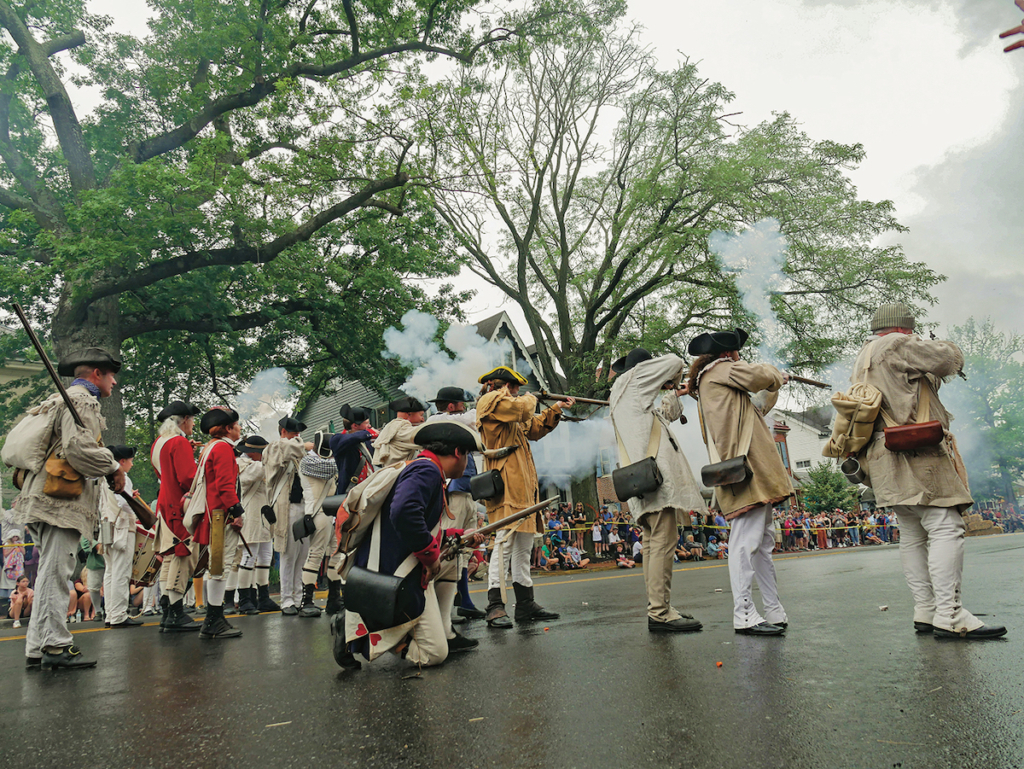
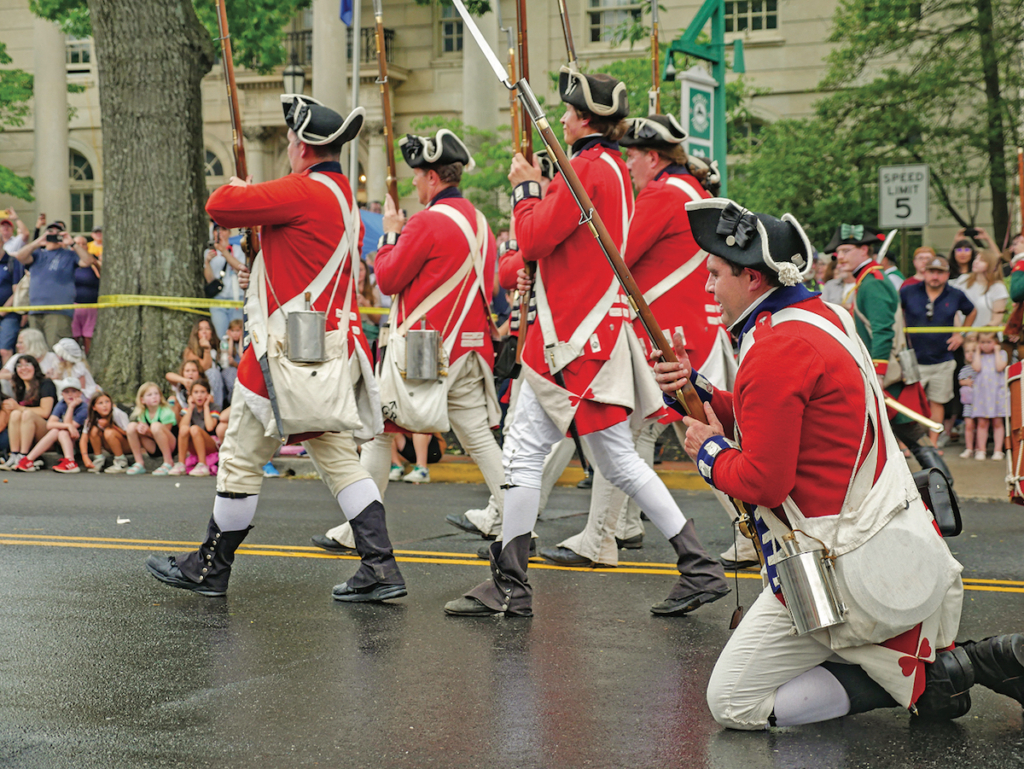
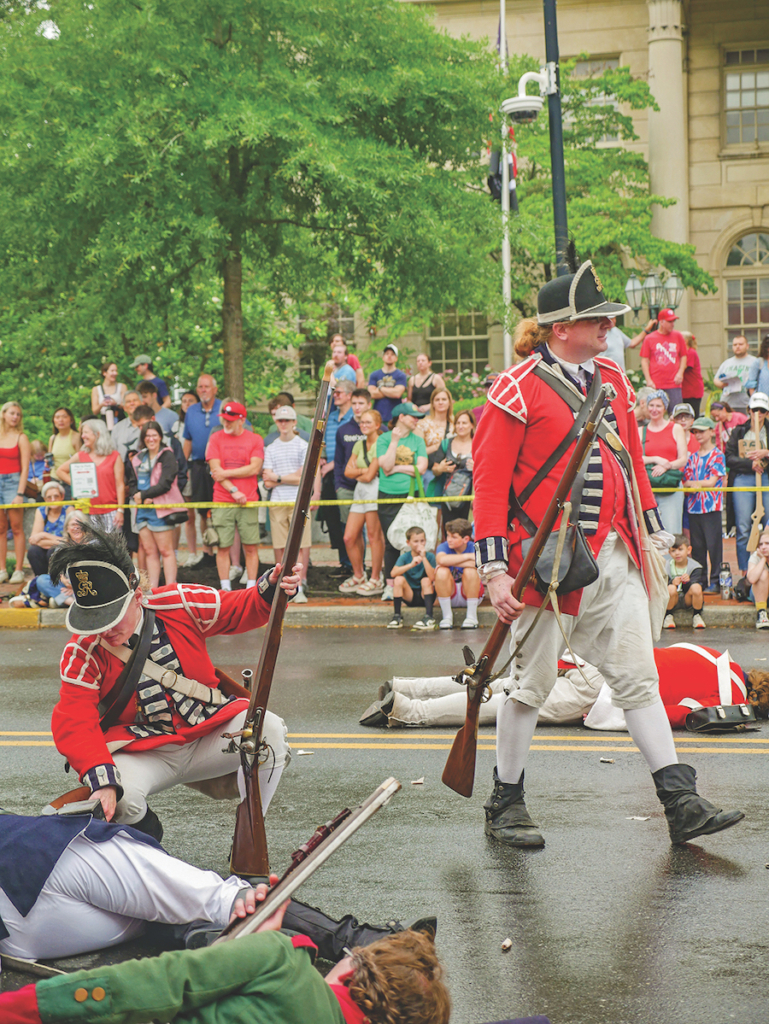
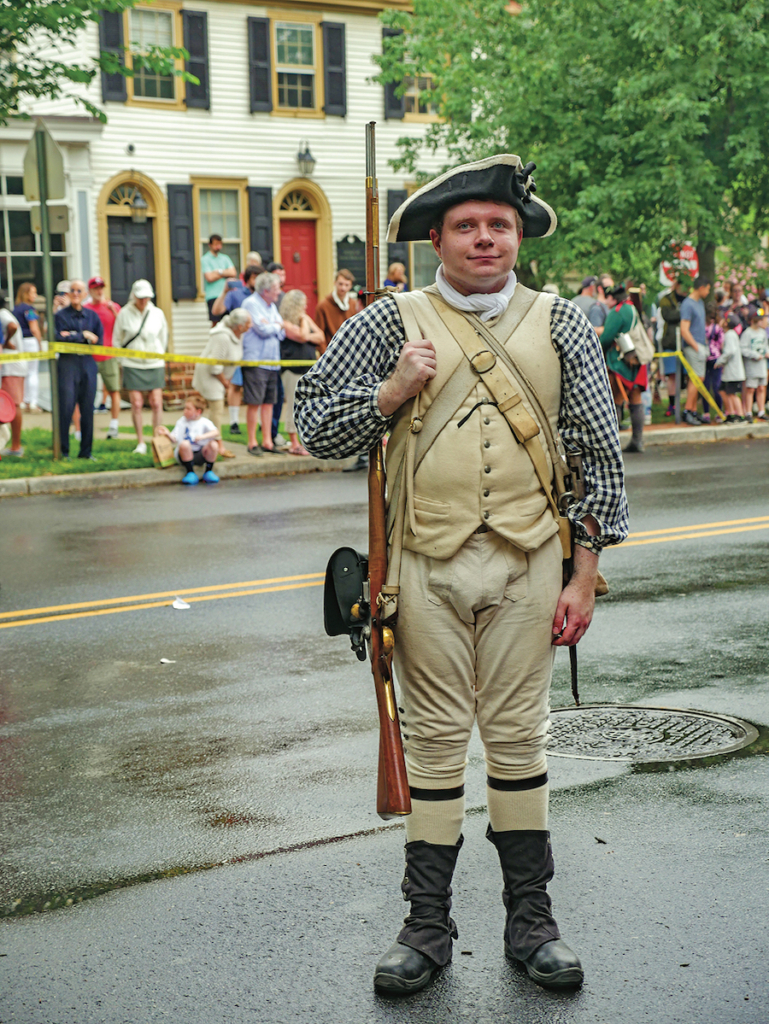
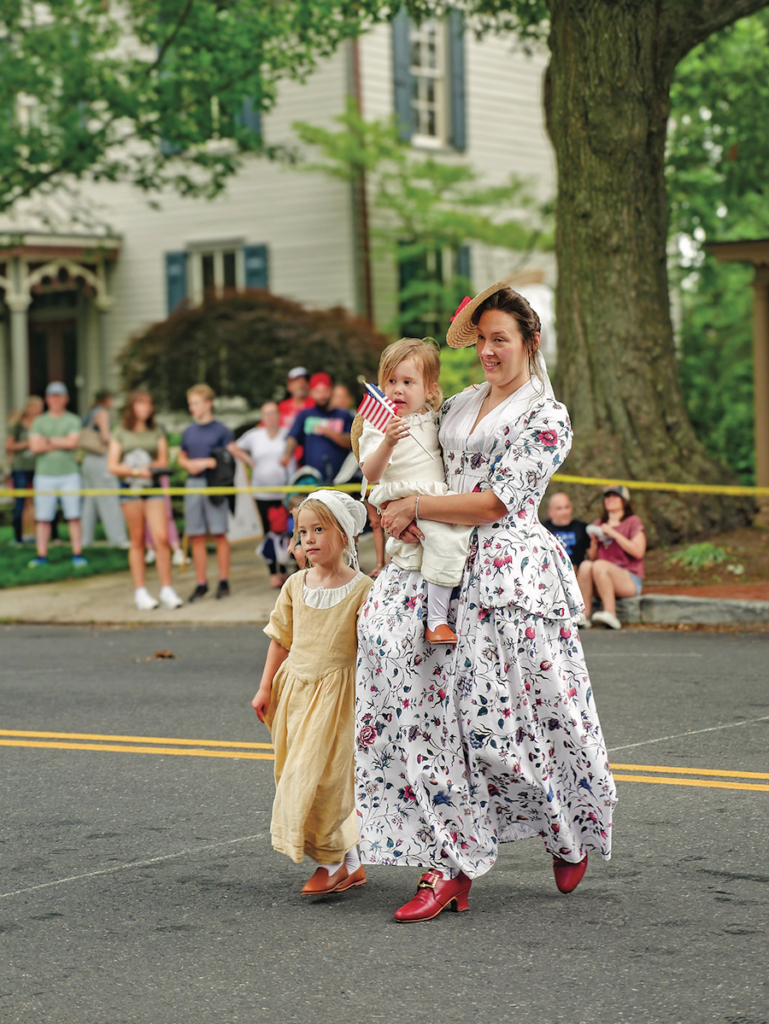
Paul Loane played an admiral in the Second Pennsylvania Regiment. While no one knows the exact location of the Skirmish, he emphasized the importance of the event as a way of remembering history.
“It is a very historical town, and the British and Continentals were through here twice …” he pointed out. “There was this skirmish that took place somewhere around here. I don’t know if it was on this street or in a clearing or whatever, but it took place in Haddonfield.
“They started commemorating this a number of years ago,” Loane added, “and we were fortunate that they got us involved early on, so that we could map out what the Skirmish would be for them and what that would entail.”
For Loane, the best part of being involved with the oldest living history reenactment organization in the country is that he can be part of planning and creating related events.
“I like to work with sites that have events to help them plan what’s going to go on,” he observed. “Also the bringing in of new members, finding recruits … That helps us grow, and the more we grow, the more authentic we look on the field.”
While the reenactments are one of the aspects of the Skirmish, it’s not the only draw. Before the battles, children were picked from the crowd to represent volunteers and were handed wooden, musket-shaped toys. They also learned military commands.
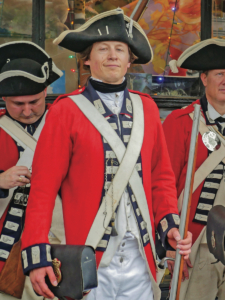
Another part of history at the Skirmish was represented by the Indian King Tavern, which was open for self-guided tours. The facility was not only a place for friends to meet and socialize and for travelers to find lodging. It was also a place where the New Jersey legislature met from January to September of 1777 and its upper floor still reflects that.
Games of the period were set up at tables throughout the tavern, from dominoes to a lesser-known dice game called Close the Box.
Linda Hess is a part-time staffer at Indian King with a feel for its history.
“It just provides people with an opportunity to get a sense of the purpose of the building,” she stated about the tavern, “the general purpose of the building and why it’s been preserved.”

